Fun with Numbers: A Kid's Guide to Basic Math
Chapter 1: Introduction to Numbers
What's in a Number? Numbers are magical symbols that help us understand the world around us. They tell us how many, how much, how big, or how small something is. Think about it: when you wake up in the morning, the first number you might see is the time on the clock. When you go to school, numbers tell you which grade you're in, which bus to take, or even how many friends you have! Every number has a unique shape and name. Some numbers, like 1, 2, and 3, might be your best friends because you see them all the time. But numbers like 100 or 1000 might seem big and mysterious right now. Don't worry; soon, they'll be your friends too!
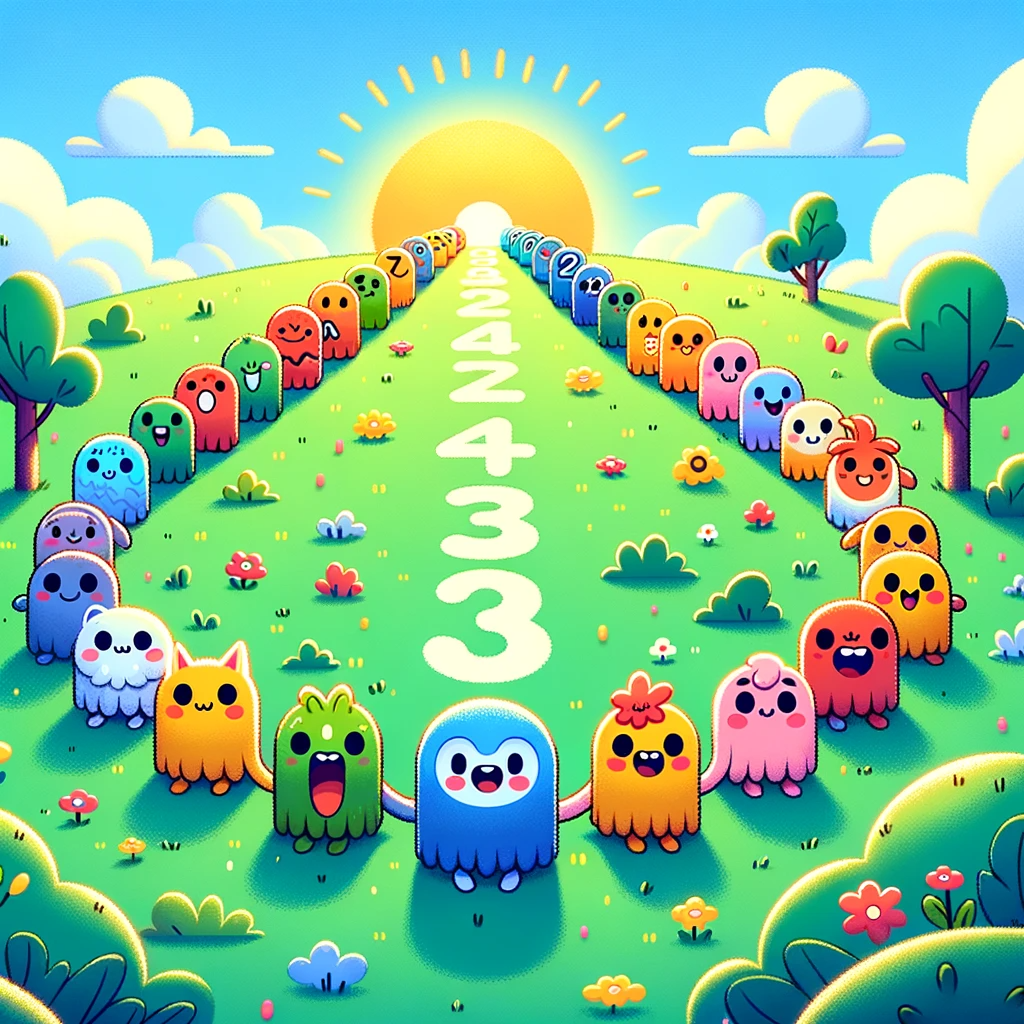
The Magical Number Line Close your eyes and imagine a long straight line that stretches from your left to your right. This is the number line, and it's like a playground for numbers! On this line, numbers sit in order, just like how you and your friends line up before class. Let's take a walk on the number line: Starting Point: The point where the line begins is called zero (0). It's like the starting line in a race. Moving Forward: As you move to the right, the numbers get bigger: 1, 2, 3, 4, and so on. Moving Backward: If you walk to the left of zero, you'll meet numbers' cousins, the negative numbers: -1, -2, -3, and so on. Numbers on the line are like milestones on a road. Every number has its special spot, and no two numbers share the same space.
Numbers are Everywhere! Numbers are not just on paper or in books. They're all around us! Nature: When you look up at the sky, you might count 10 birds flying or 5 flowers blooming in your garden. Home: At home, you might have 4 chairs around your dining table or 2 doors in your room. School: In school, there might be 20 students in your class, or you might read 3 books a week. Numbers help us describe and understand these everyday things.
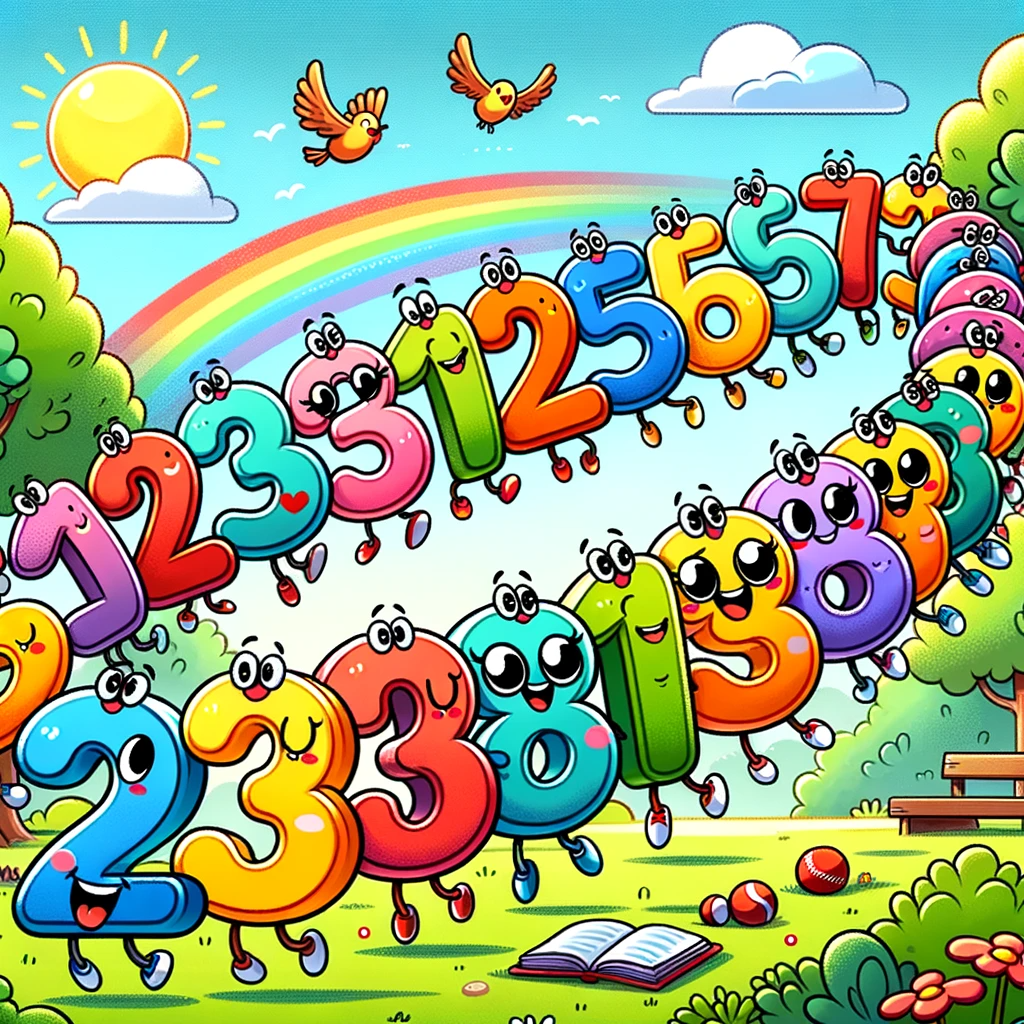
Numbers are fascinating friends that are always with us, helping us make sense of the world. They can be small like the 1 shoe on your left foot or big like the 1000 stars in the night sky. And the best part? There's always more to learn and discover about them! In the next chapter, we'll dive into the art of counting and see how numbers come alive!
Chapter 2: Counting and Cardinality
The Joy of Counting Counting is one of the first math skills we learn as kids. It's like a fun game! Remember when you first counted your fingers or the number of toys you had? Counting helps us understand how many of something there are.
Counting Forward and Backward When we start counting, we begin with the number one and move forward: 1... 2... 3... and so on. But did you know we can also count backward? That's how we count down to exciting moments, like the start of a race or the New Year! 3... 2... 1... Go!
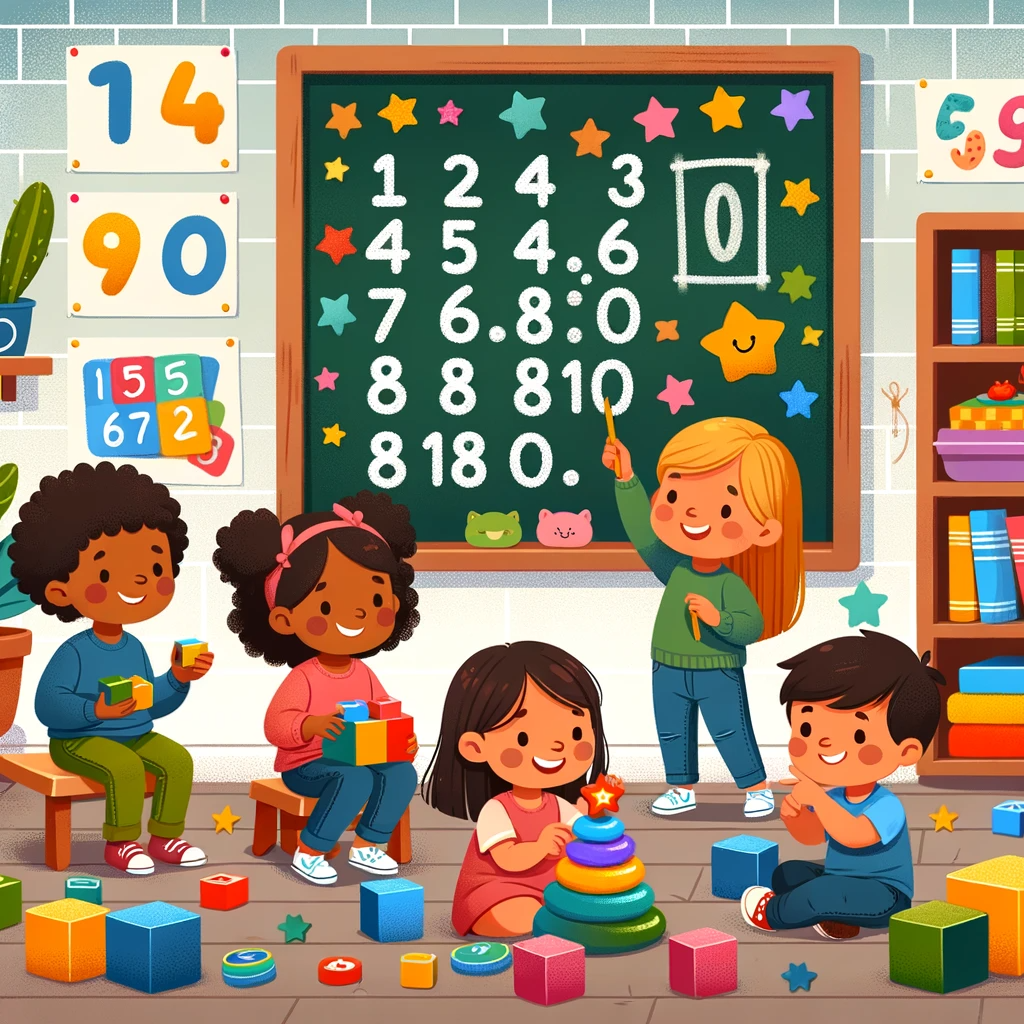
Activity: Let's play a game! Look around you and find a group of objects. It could be pencils, buttons, or even candies. First, count them forward and then try counting them backward. Isn't it fun?
Recognizing Numbers Numbers are not just for counting. They also have unique shapes that we can recognize. The curvy 3, the straight-lined 4, or the circular 0 are all distinct.
Activity: Here's a challenge! Close your eyes and ask someone to write a number on a piece of paper. Feel the shape of the number with your fingers. Can you guess which number it is?
Counting is Everywhere! Whether we're at the playground, in the classroom, or at home, counting is a part of our daily lives.
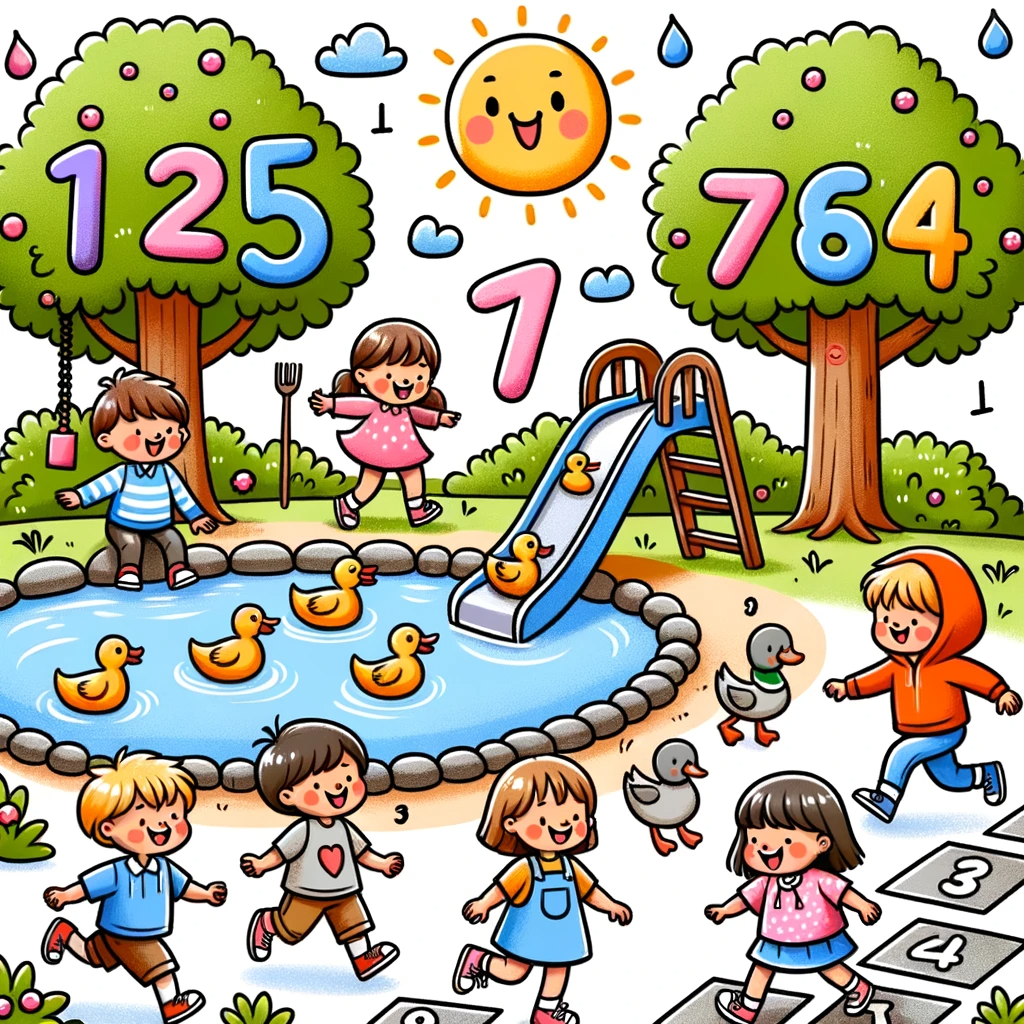
Playground: How many swings are there? How many kids are playing? Classroom: How many books are on the shelf? How many chairs are around the table? Home: How many spoons are in the kitchen? How many windows are in your house? Activity: Become a number detective for a day! Everywhere you go, find things to count. You'll be surprised at how many things you can count in just one day.
Counting is more than just saying numbers out loud. It's a way for us to understand the world around us. And the best thing about counting? There's no end to it! As you grow older, you'll be counting bigger and bigger numbers. In the next chapter, we'll explore adding and taking away with numbers. Are you ready for the adventure?
Chapter 3: Basic Arithmetic - Addition and Subtraction
The Magic of Addition Do you know what happens when you take two groups of things and put them together? You're doing addition! Addition is like creating a team. If you have 2 apples and find 3 more, how many do you have in total? That's right, 5 apples!
Understanding Subtraction Subtraction is the opposite of addition. Imagine you have a box of 5 chocolates, and you eat 2. How many are left? You guessed it - 3 chocolates! Subtraction is like sharing or giving away.
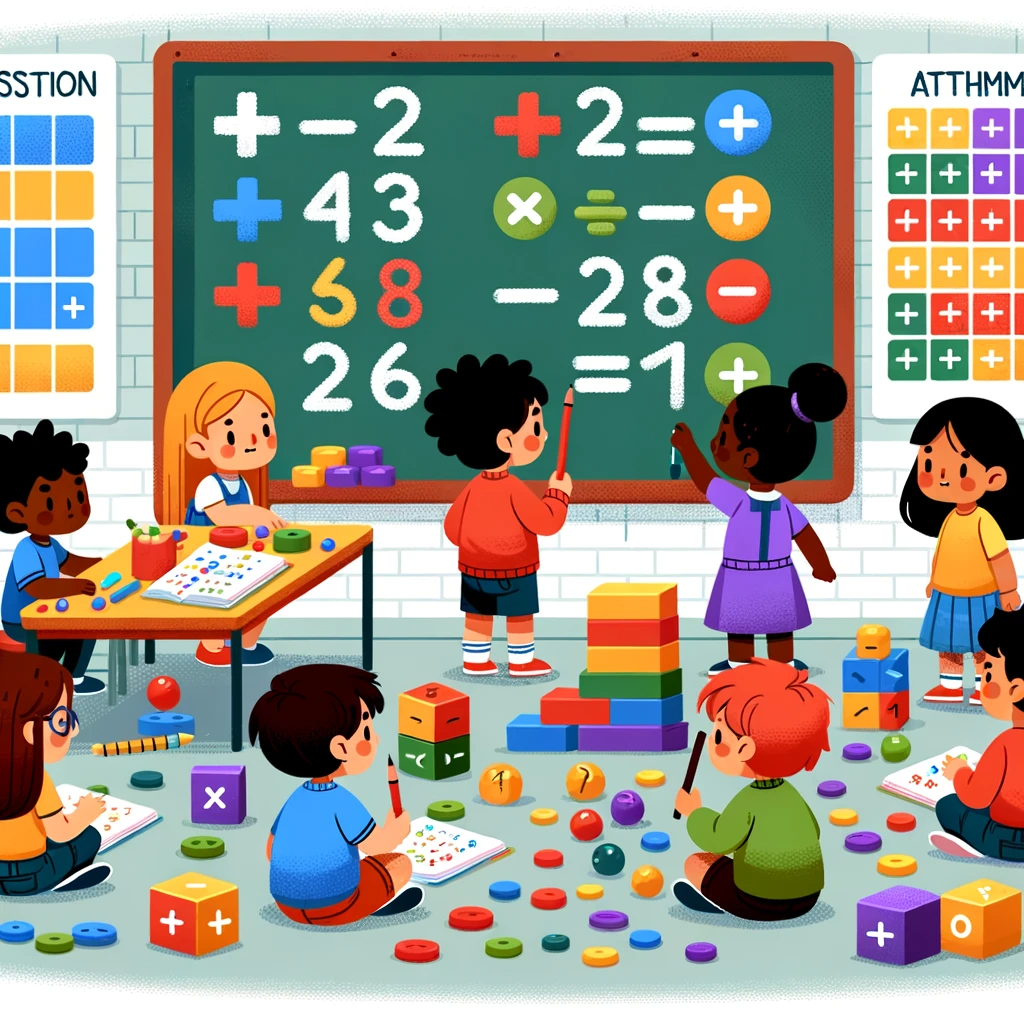
Symbols of Arithmetic In math, we use special symbols to show addition and subtraction:
+ is the sign for addition. Example: 3 + 2 = 5
- is the sign for subtraction. Example: 5 - 2 = 3
Word Problems: Making Math Real Sometimes, math problems are told as stories. Let's try one: Lucy has 3 teddy bears. Her friend gives her 2 more. How many teddy bears does Lucy have now? The answer is...? That's right, 5 teddy bears!
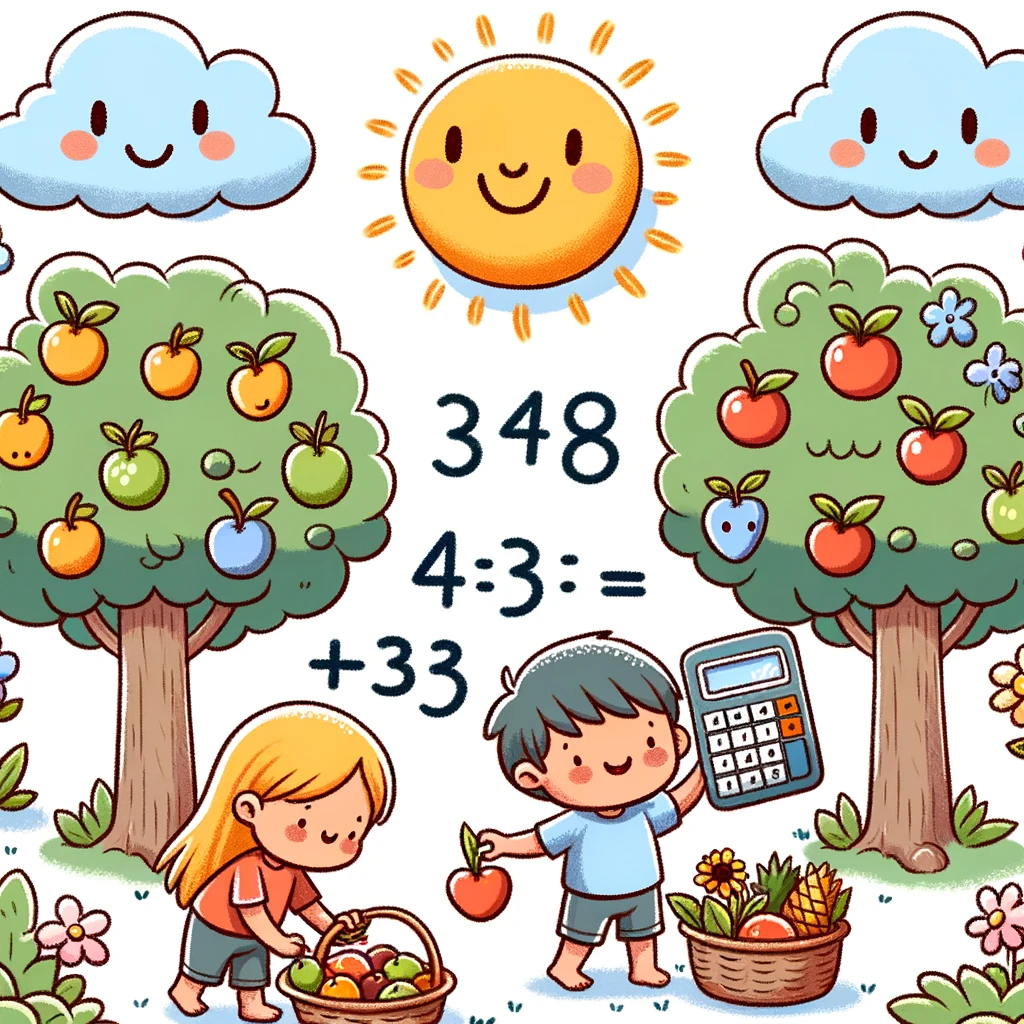
Games with Numbers Playing with numbers can be a lot of fun. Here are some games you can try: Number Race: Roll a dice. Add the number you get to a starting number. First one to reach 50 wins! Subtraction Treasure Hunt: Hide some toys. Start with a number, say 10. Each time a toy is found, subtract 1. The goal is to reach 0.
Addition and subtraction are like the building blocks of math. They help us understand how numbers work together, whether we're gathering things or giving them away. And the best part? There are endless fun ways to practice! In our next chapter, we'll explore shapes and patterns. Are you excited?
Chapter 4: Shapes and Patterns - The World Around Us
Introduction to Shapes Everywhere we look, we can find shapes! The sun in the sky is round like a circle, and the door you walk through is shaped like a rectangle. Learning about shapes helps us understand the world better.
The Basic Shapes Let's start with some simple shapes:
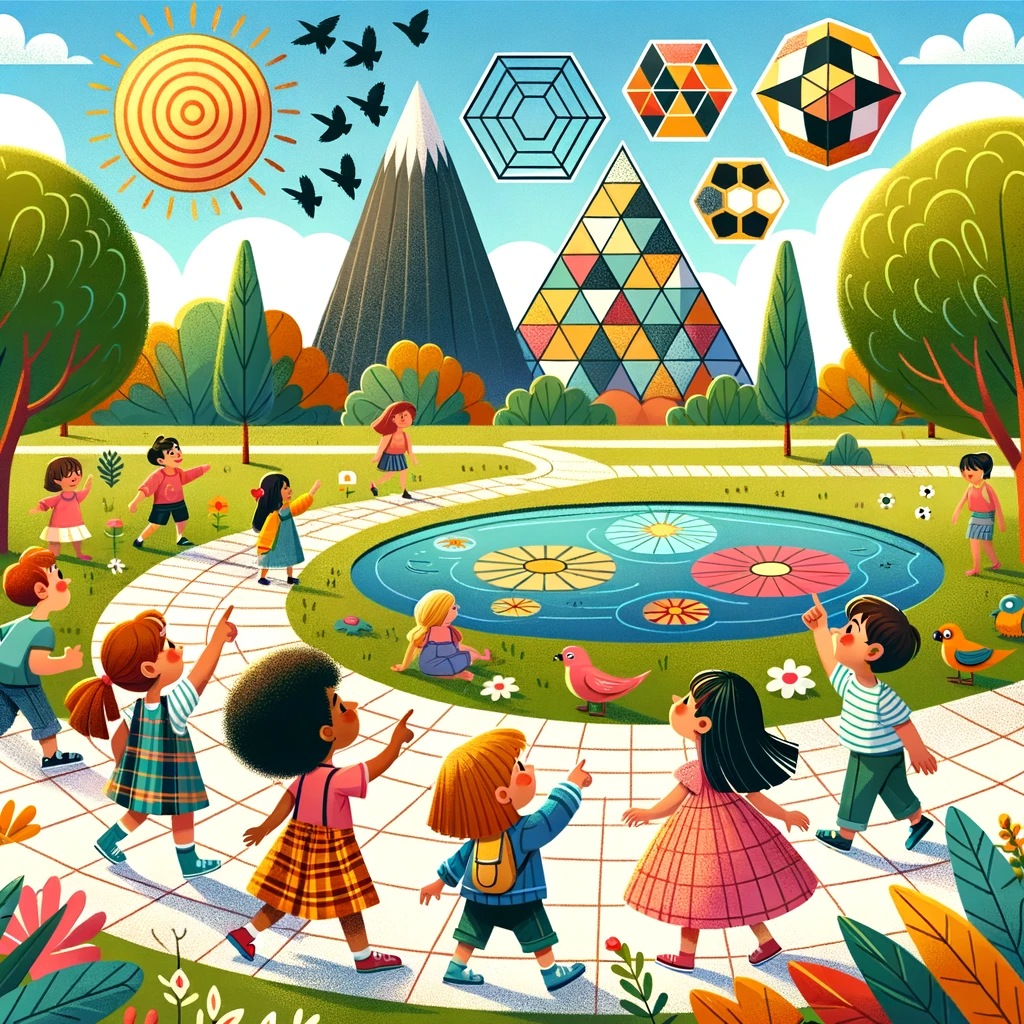
Circle: Perfectly round. Think of a pizza or a coin. Square: Four equal sides. Like a chessboard square. Rectangle: It has two long sides and two short sides. Books and doors are usually rectangular. Triangle: It has three sides. Mountains often look like triangles.
Shapes in Nature Nature is full of wonderful shapes: Trees have circular leaves and rectangular trunks. Honeycombs are made of hexagons. Starfish have five arms spreading out like a star.
Patterns Everywhere A pattern is something that repeats in a regular way. Stripes on a zebra, the rhythm of a song, or the days of the week are all patterns. Can you think of a pattern in your house? Maybe the tiles on the floor or the design on your bedsheet?
Creating Your Own Patterns Grab some colored pencils or crayons. Draw a series of shapes in a particular order. Now, repeat that order again and again. Congratulations! You've made a pattern.
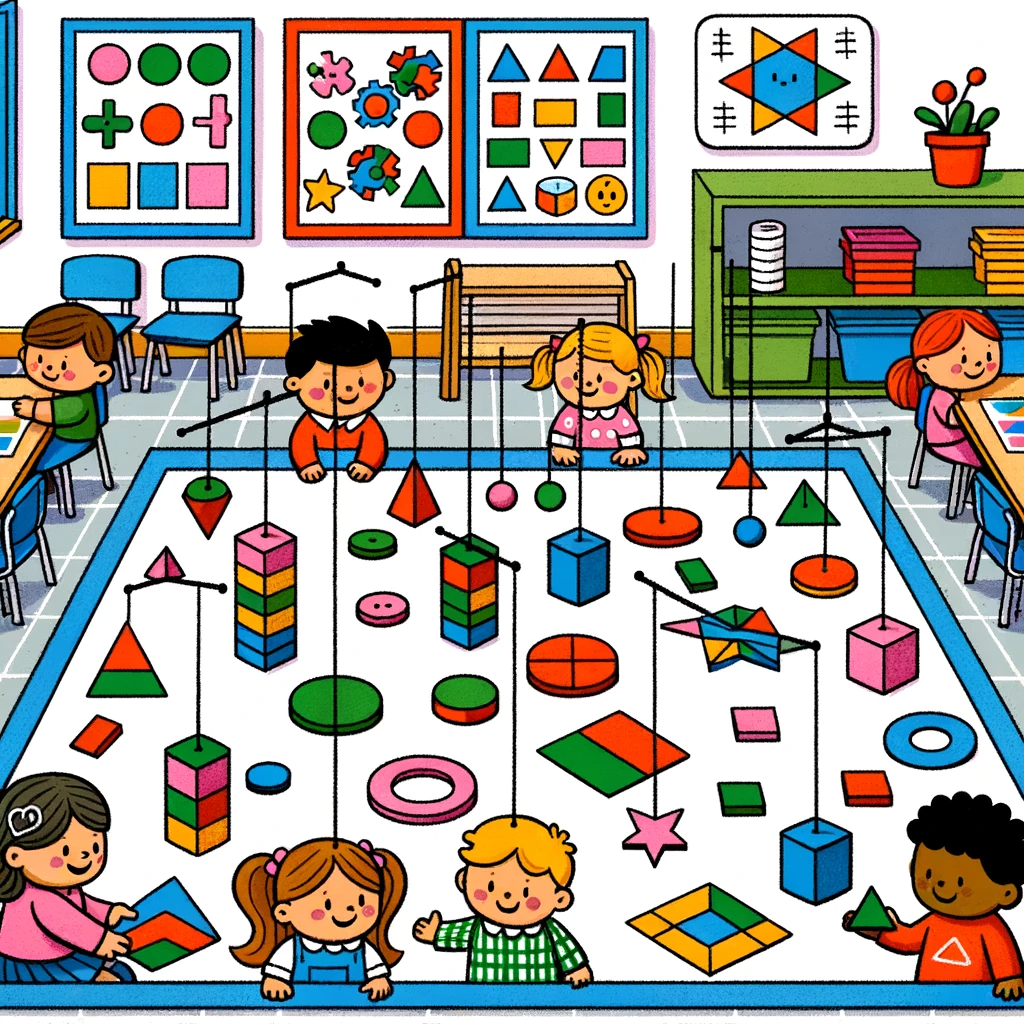
Shapes and Patterns in Math In math, we use shapes and patterns to solve problems. For example, if we know the pattern of a sequence, we can predict what comes next.
Shapes and patterns are not just math concepts; they are all around us, in everything we see and do. By understanding them, we can make sense of the world and even predict what might happen next! In the next chapter, we'll dive deeper into the world of numbers and explore multiplication and division. Are you ready?
Chapter 5: Taking the Leap - Multiplication and Division
Introduction to Multiplication Think of multiplication as a fancy way of doing repeated addition. If you have 3 groups of 4 apples each, instead of adding 4 + 4 + 4, you can simply multiply: 3 times 4 is 12.
Making Sense of Multiplication Imagine you have 5 boxes, and each box contains 6 toys. How many toys do you have in total? That's right! 5 multiplied by 6, which is 30 toys.
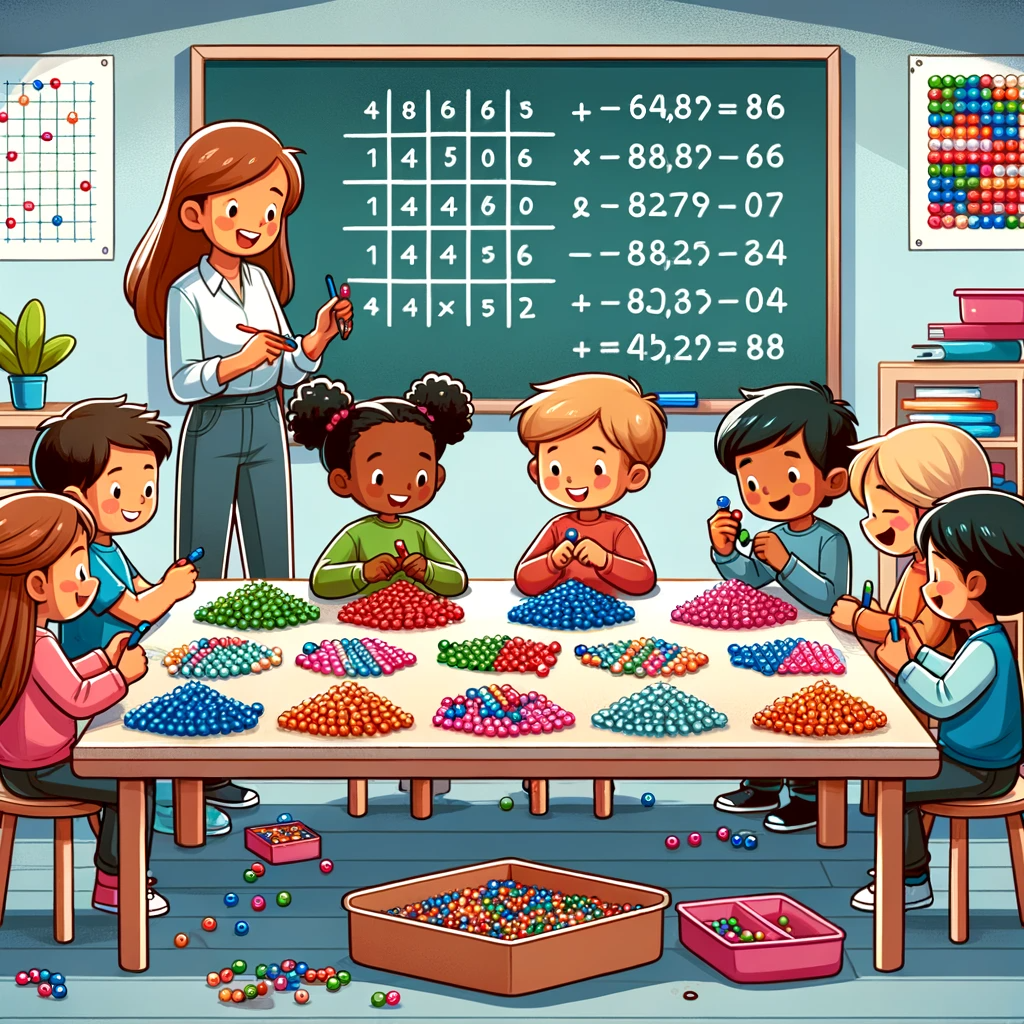
Division: Sharing Equally Division is the opposite of multiplication. If you have 20 candies and you want to share them equally among 5 friends, how many candies does each friend get? This is where division comes in!
Relating Division and Multiplication Remember the candies? If each of the 5 friends received 4 candies, then 5 multiplied by 4 is 20. And if you start with 20 candies and divide them among 5 friends, each gets 4. See the connection?
Visualizing with Arrays Arrays are a great way to understand multiplication and division. An array is a set of objects arranged in rows and columns. If you have 3 rows of 4 objects each, that's 3 times 4!
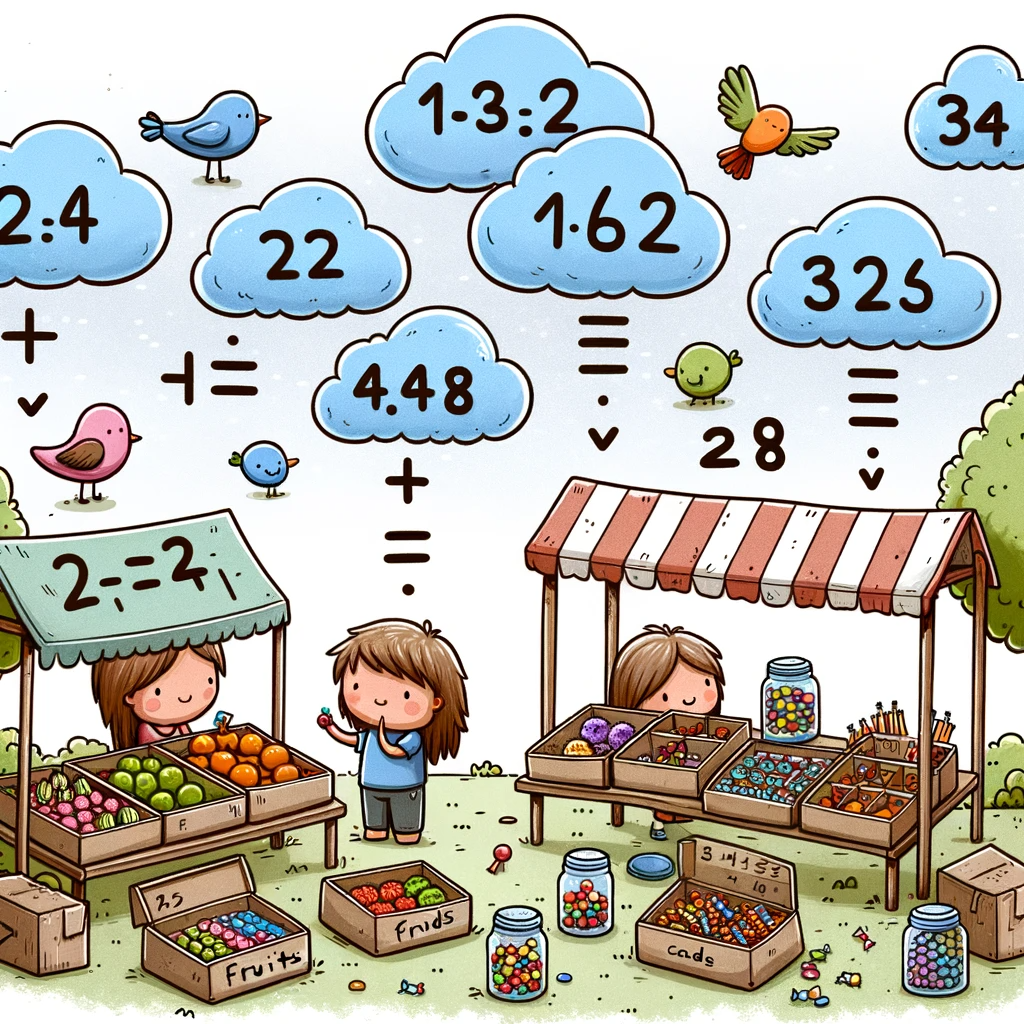
Word Problems: Putting it into Practice Problem: Lucy has 7 packs of stickers. Each pack has 8 stickers. How many stickers does Lucy have in total? Solution: Multiply the number of packs by the number of stickers in each pack. Problem: Jake has 36 marbles. He wants to divide them into boxes of 9. How many boxes can he fill? Solution: Divide the total number of marbles by the number in each box.
Multiplication and division might seem tricky at first, but with practice, they become fun tools to help us solve everyday problems. Always remember: multiplication is like fast addition, and division is all about sharing! In the next chapter, we'll explore the magical world of fractions. Get ready for another exciting mathematical journey!
Chapter 6: Fractions - A Slice of the Whole
Introduction to Fractions Have you ever shared a pizza or a chocolate bar with someone? When you take a piece of it, you're actually taking a fraction of the whole thing!
Understanding the Basics A fraction has two parts: the top number is called the numerator, and the bottom number is the denominator. If you eat 1 slice of a pizza that's cut into 8 slices, then you've eaten 1/8 of the pizza.
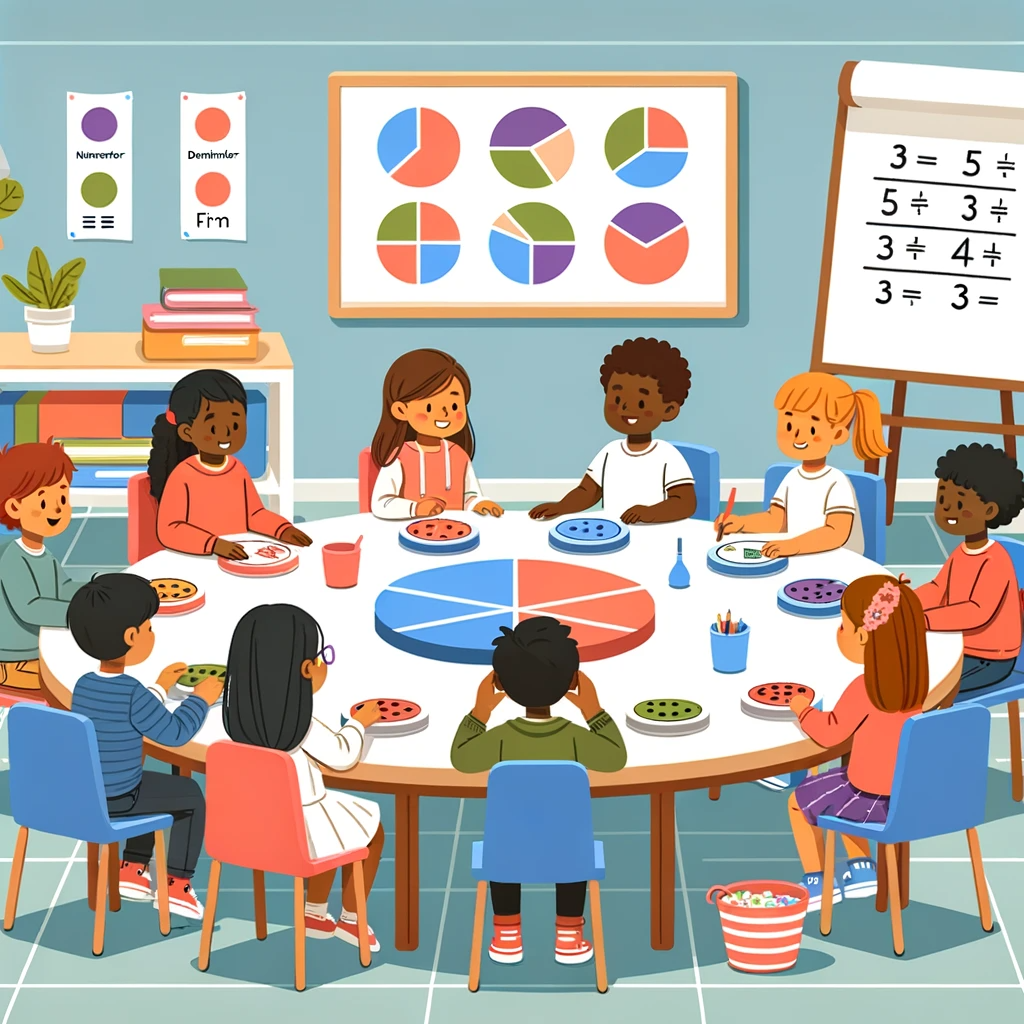
Visualizing Fractions Imagine a circle. If you color half of it, you've colored 1/2. If you color a quarter, that's 1/4. Using shapes can help us understand fractions better.
Adding and Subtracting Fractions When you add or subtract fractions, it's like combining or taking away pieces of the same kind of thing. Just remember, the bottom number (the denominator) has to be the same when you're adding or subtracting!
Multiplying Fractions When you multiply fractions, you're finding a fraction of a fraction. For instance, 1/2 of 1/4 is 1/8. It's like sharing a half slice of your half pizza slice with a friend!
Dividing Fractions Dividing by a fraction is the same as multiplying by its opposite. So, if you divide by 1/2, it's the same as multiplying by 2. It might sound tricky, but with a little practice, it becomes easy-peasy!
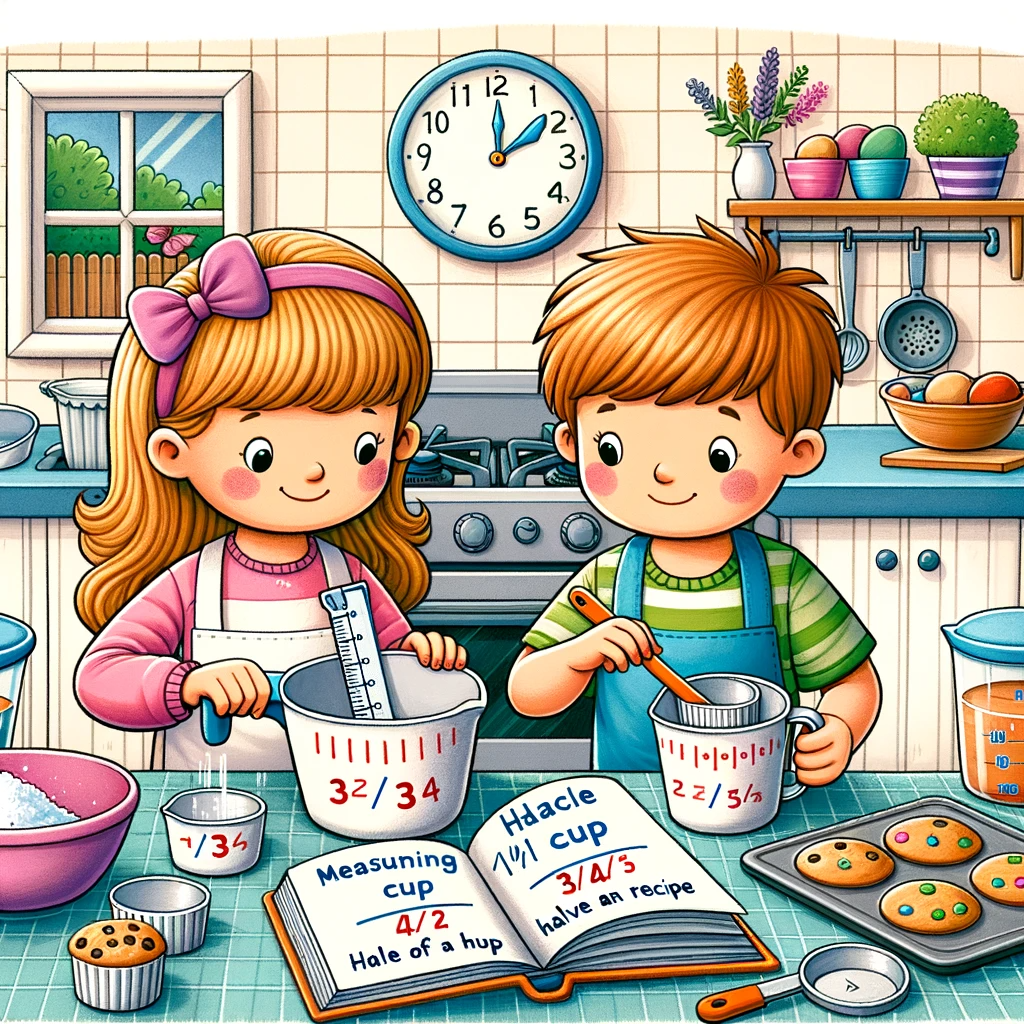
Real-Life Applications of Fractions Baking: If a recipe asks for 1/2 cup of sugar but you want to make half the amount, how much sugar do you need? Gardening: Imagine you plant 3/4 of a garden with flowers and the rest with herbs. If your garden is divided into 8 sections, how many are filled with flowers?
Fractions are everywhere around us! From the food we eat to the time we spend on activities, fractions help us understand and measure parts of a whole. In our next chapter, we'll dive into the exciting world of decimals and percentages. Stay tuned!
Chapter 7: Decimals and Percentages - Beyond the Whole
Introduction to Decimals Decimals are a way to represent numbers that are less than one or more than a whole but not a complete next number. Think of them as a continuation of fractions, but in a different format.
The Decimal Point At the heart of every decimal is the decimal point. It's what separates the whole number from the fractional part. For example, in the number 2.5, the decimal point separates the whole number 2 from the fractional part 5, which stands for half.
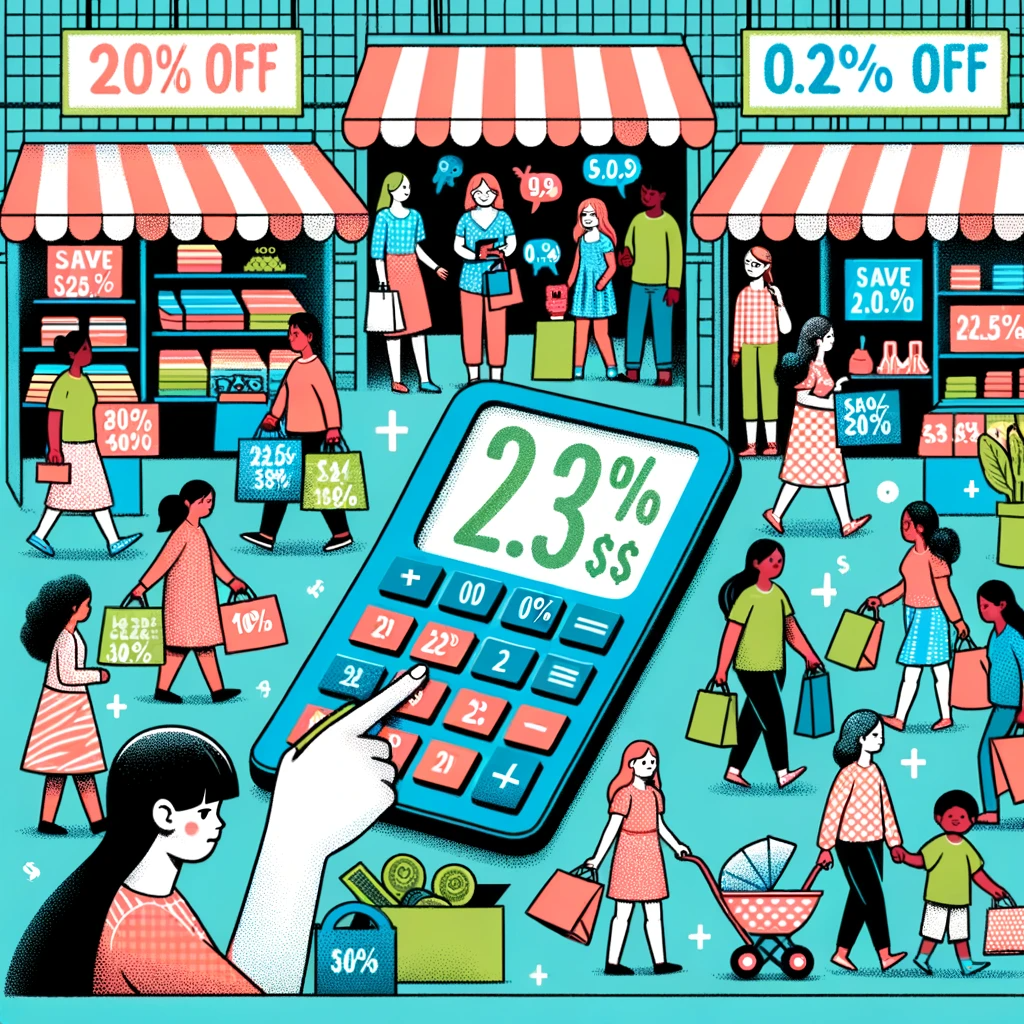
Converting Fractions to Decimals Remember 1/2 from our fractions chapter? In decimal form, it's 0.5. And 3/4? That's 0.75! By dividing the numerator by the denominator, we can find the decimal equivalent of a fraction.
Introduction to Percentages A percentage is another way to represent a fraction, but it's based on 100. When we say 50%, we mean half, or 50 out of 100. It's like saying 1/2 but in a different way.
Converting Decimals to Percentages (and vice versa) Moving between decimals and percentages is a breeze. To convert a decimal to a percentage, multiply by 100. So, 0.75 becomes 75%. And to go back? Just divide by 100!

Real-Life Applications of Decimals and Percentages Shopping: If a shirt costs $20 and there's a 15% sale, how much do you save? Banking: If you have $100 in a bank account and earn 2.5% interest annually, how much will you have at the end of the year?
Decimals and percentages, much like fractions, are tools to help us understand and work with numbers that aren't whole. They're especially useful in situations where precision is required. Hooray! You've taken your first steps into the world of math. Keep exploring, playing, and learning. The world of numbers has so much more to offer!
By Tommy Hong
About ME:

Venmo